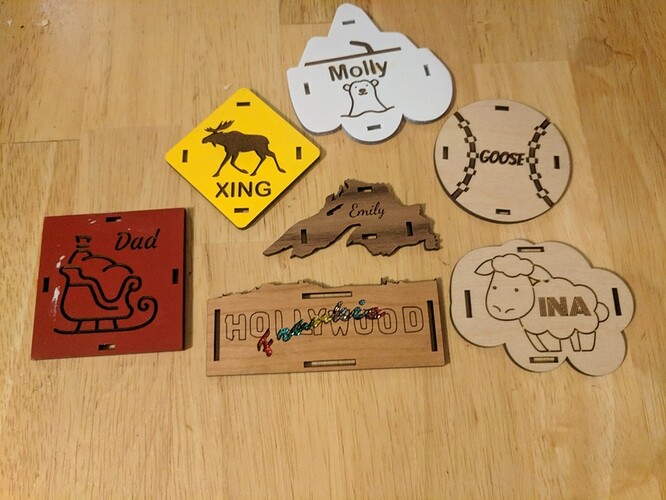What I was getting at was taking a piece of wood, painting the surface with acrylic paint, letting it dry and then covering the whole thing in paper tape masking. engraving the piece. I was curious about this process. It makes sense to me that if I left it unmasked that the paint would scorch. But if it were masked, you would get nice clean lines etched without damaging the surrounding painted surface. I was wondering if anyone had used this process.
That’s what I did with the three painted name tags. The white spots on Dad’s tag is my bad (paint transfer from Molly’s tag.)
fantastic!
Which paint do you use for acrylic?
I’ve used acrylic paint, but there are a lot of other comments in this thread regarding other types of paint people have used.
There is some recent discussion of acrylic paint in this thread:
I just found this thread, and I’m zeroing in on a process that works well. I’m aiming for switchplates for automotive use, so I don’t want the glossy acrylic surface.
I’m using matte-black acrylic from Tap, which I think is the “P95” from Chemcast. You don’t need a lot of engrave, but low power gives you better edges on the masking, so I’ve been doing two passes at 1000/30. Two light coats of white Krylon, let it dry fully, then remove the masking.
It will hold 12pt Helvetica Bold, and touching up Helvetica Medium wouldn’t be too bad. Large areas are fine. Here’s a test piece.
Nice work and that paint job looks nice and clean. And if I could use only one acrylic, it’d be Tap matte black. I adore that stuff.
Where do you get this type of plastic? How thick is it? Will it stand on it’s own? I’m wanting to make a seating chart for a wedding with color!
Would you mind sharing the glowforhe settings you ised. I am doing some similar, but where I am removing material it appears chared rather than the color of the acrylic.

